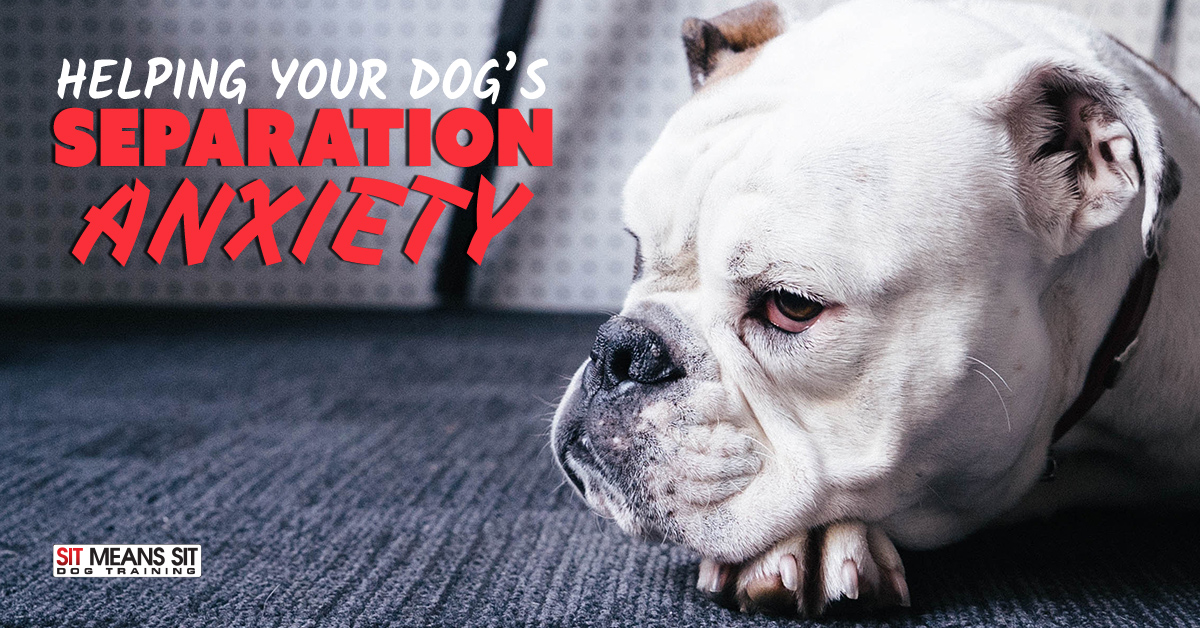
Helping Your Dog’s Separation Anxiety
Does your dog seem to go crazy when you’re gone for too long, eating shoes and clawing the floor? If your pup shows signs of stress and anxiety when you leave, they may be suffering from separation anxiety. Having a pet with separation anxiety can be frustrating, but as their loving owner, you should do your best to help minimize your pup’s anxiety. Here are some tips for how to help your dog’s separation anxiety:
Understanding Separation Anxiety
Simple whining or a bit of messiness when you leave the house is normal, even endearing at times. The disorder occurs when your dog is extremely attached to you and becomes distressed, extremely anxious, and/or destructive when you leave. This leaves many owners frustrated and hopeless. However, the first step in dealing with your dog’s separation anxiety is to understand why they act this way. It can result from a variety of reasons, the most common being moving from a shelter to a new home, being left alone for the first time after being with people for a while, changing ownership, changing routines, or loss of a family member. These may seem trivial, but to your pet, just a small change can upset their entire lifestyle.
Knowing the Signs of Separation Anxiety
The next step in controlling your dog’s separation anxiety is to recognize the signs. This will make it easier for you to anticipate an anxiety attack and face it head-on. A dog suffering from separation anxiety will, first and foremost, show lots of stress when left alone. This includes howling and barking in excess, having “accidents” indoors despite being housebroken, chewing your personal items, digging holes in the house, scratching at windows and doors, drooling or salivating much more than usual, pacing obsessively, or trying to escape. When you’re around, your pup likely won’t do any of these things, so it may be difficult to notice some of the physical signs. However, home destruction is quite common in anxious pets, so this is a good sign.
Dealing With Mild Cases
First, talk to your vet to make sure your dog’s anxiety doesn’t originate from a medical problem like an infection or hormone deficiency. Ruling these out will make treating your dog’s separation anxiety much easier for you and your pooch! Luckily, mild cases of separation anxiety can be resolved with just a few changes on your part. Leaving your dog a special treat like a kong stuffed with peanut butter or their favorite dental chews can distract them from your absence and satisfy their sweet tooth. You should also be subtle about coming and going! Your instinct may be to pet, play, and roll around with your furry friend when you get home, but too much initial excitement could make your absence harder on your dog. Other easy tricks include leaving your clothes out (your scent will comfort your pooch) and giving your dog some natural calming supplements.
More Severe Cases
Unfortunately, furry friends with severe separation anxiety won’t get much comfort from your toys and tricks. A nervous dog will notice signs that you’re planning to leave, such as putting on your shoes, and this will trigger their anxiety. To reduce their stress, act like you’re going to leave, but stay instead. Do this over and over until your dog seems less anxious. After that, move onto leaving for extremely short periods of time. Close a door in your house and go to the other side of it for a few seconds, then reappear. Slowly increase the amount of time that you disappear for, and your dog will get used to your absence! Work your way up to outside doors up until they’re ready to be left alone. Each time you leave, command your dog to stay. This will give them a sense of control. Training your dog out of separation anxiety is difficult and time-consuming, but it’s so worth it for you and your dog to live stress-free!
Separation anxiety is a pain to deal with, but you can help your dog overcome even the worst separation anxiety by following these helpful tips. Other general tips include making sure your dog is living a healthy lifestyle that includes plenty of exercise and a healthy diet. Leaving your dog at home knowing that they’ll be all right is a huge relief, so start working toward an anxiety-free pup ASAP!
